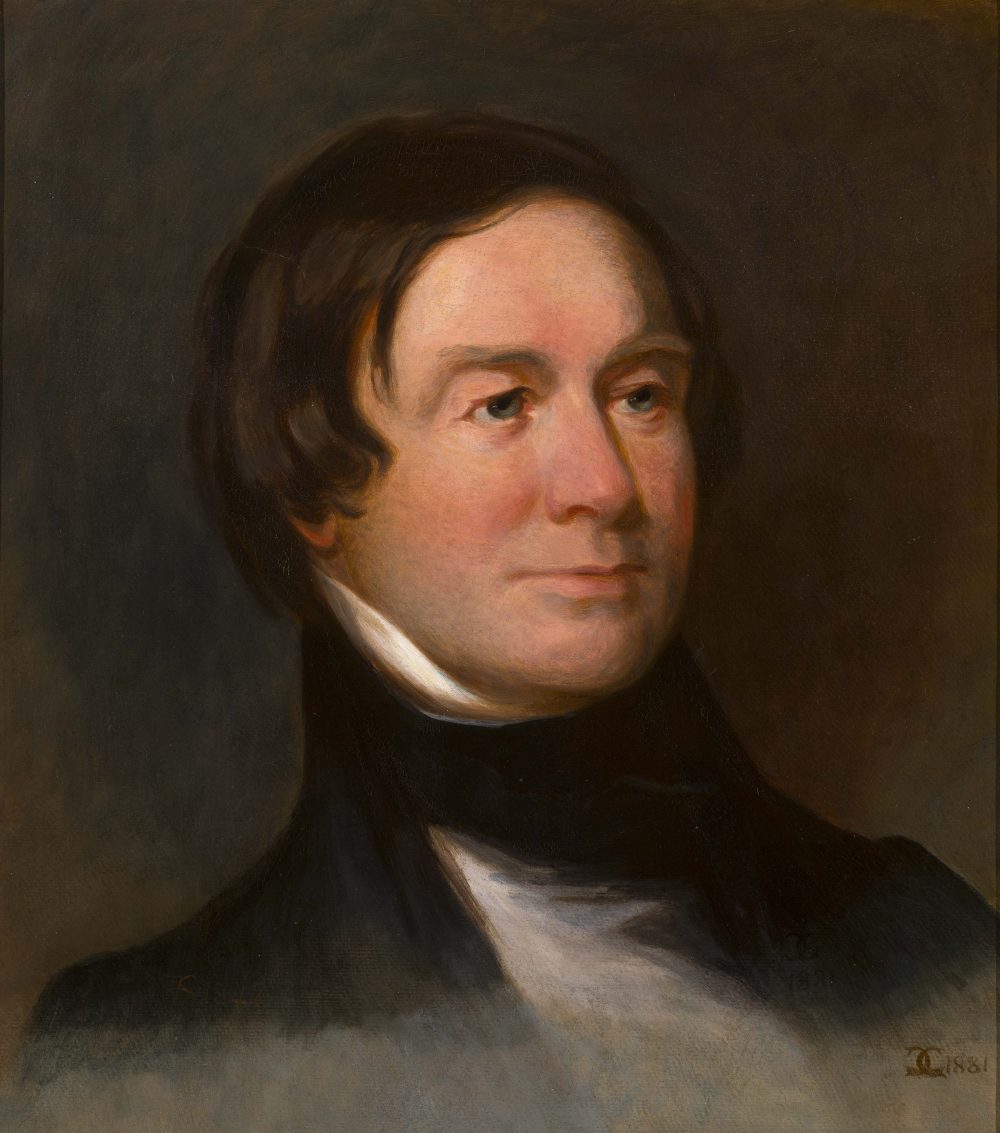
Portrait of James Louis Petigru (1789-1863), the first president of the South Carolina Historical Society, by his daughter Caroline Carson and based on the 1842 portrait by artist Thomas Sully. From the collections of the South Carolina Historical Society.
On Saturday May 19, 1855, a group of prominent Charlestonians met at the Medical College (now Medical University of South Carolina) to discuss the formation of a historical society. James Louis Petigru, a lawyer and former Attorney General of South Carolina, chaired the meeting. William James Rivers, a professor at South Carolina College (now the University of South Carolina) and later president of Washington College in Chestertown, MD, functioned as secretary. Frederick Adolphus Porcher, a former member of the South Carolina State Legislature and a professor at the College of Charleston, proposed to those gathered that they “should agree to form themselves a society to be called the Historical Society of South Carolina.” It was determined that James Moultrie, a professor of Physiology at the Medical College, with Porcher and Rivers, would form a committee to draft a constitution and by-laws for the proposed society, and that the group would reconvene in two weeks.
On Saturday June 2, 1855, they met at 50 Broad Street, home of the Charleston Library Society. With Petigru chairing the meeting, Moultrie presented the eleven articles of the constitution as well as the twelve by-laws and five resolutions drafted by the committee. The first four articles of the constitution read as follows:
Article 1.
This society shall be called the South Carolina Historical Society.
Article 2.
The object shall be to collect, preserve, and diffuse information relating specifically to the history of the state in all of its departments and to American history generally.
Article 3.
It shall consist of resident and corresponding members.
Article 4.
It shall be open for resident members to every individual of good report within the state, application for membership being made to the Society by letter, or through the personal appreciation of a present member.
The original by-laws laid out the organization of the Society’s board with a president, vice president, and secretary. The by-laws stated in part that a “librarian shall preserve and arrange in good order, the books, manuscripts, documents, pamphlets, and papers of the Society; keep a catalogue of the same…; make a record in a book to be furnished for the purpose of all bequest and donations, with the names of the donors and the time of their bequest.” Three standing committees were established in the by-laws: a library committee, printing and publishing committee, and finance committee. The resolutions included petitioning the state legislature for a suite of rooms in the courthouse and requesting permission from the state to make copies of manuscripts held in the state’s offices.
The constitution, by-laws, and resolutions were adopted at that meeting on June 2nd, and Porcher moved that the society proceed with the election of officers until new ones were selected at the annual meeting on June 28, 1856. James L. Petigru was elected president, James Moultrie vice president, William Gilmore Simms second vice president, and Frederick Adolphus Porcher secretary.
This month marks 170 years since that 1855 meeting laid the framework for the South Carolina Historical Society. In the ensuing years, despite a civil war, numerous natural disasters, and major societal and political changes, the Society and its collections have endured and expanded. Today, the Society’s collections are used by scholars around the globe to tell the complete story of South Carolina. The Society’s vast collection is available to everyone and used by students, researchers, genealogists, scholars, and life-long learners to discover more about their family history or to write award-winning books on various aspects of American history. The collection has also enabled the Society to tell the story of the state’s history and its people in a state-of-the-art museum visited by thousands of people from around the world.
SCHS continues its core mission to collect, preserve, and diffuse information about the state’s history and role in the history of the United States, but today it does so with an understanding that history is not static. We do not know how future historians and scholars will view this period in history 170 years from now, but by collecting, preserving, and sharing information about the state’s history that includes all of its people regardless of race, gender, class, socioeconomic background, sexual orientation, or disability and by representing, as best as it can, the diverse views and beliefs held by people in the state, it will continue to fulfill its mission.